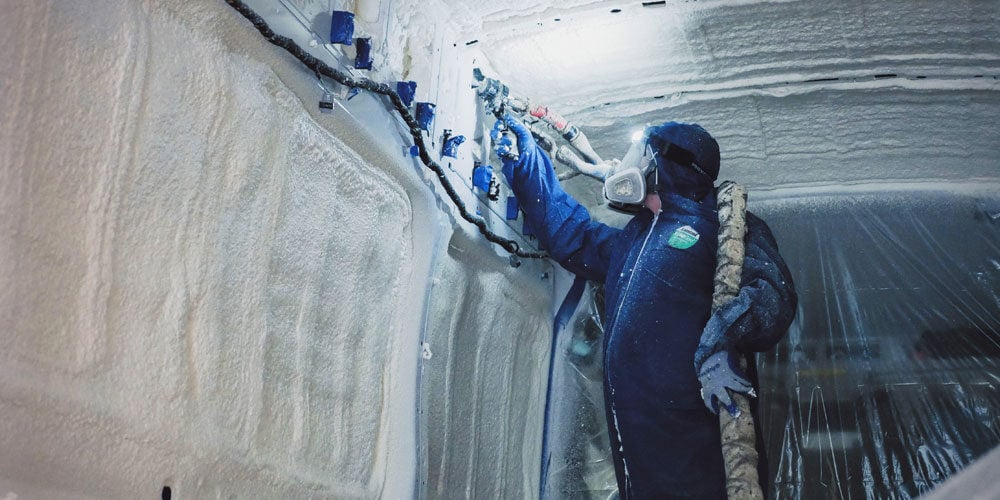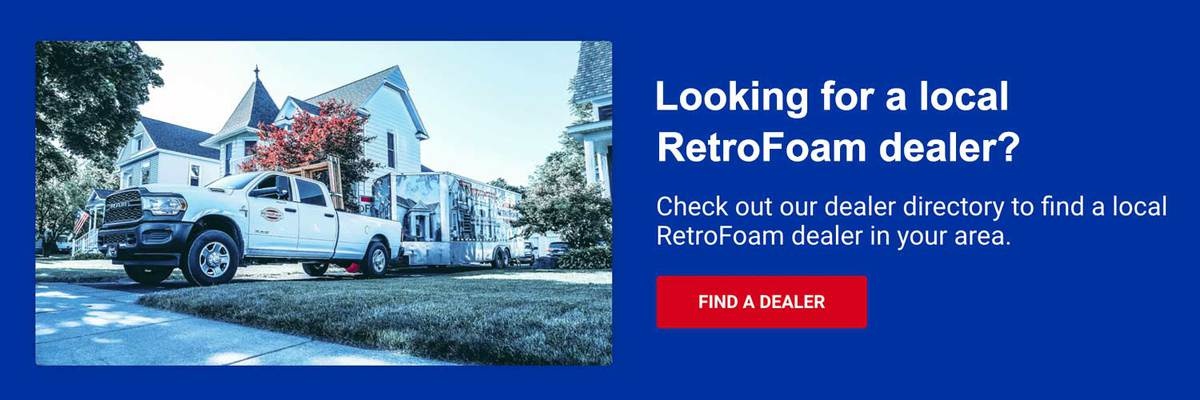Spray Foam Insulation for Camper Vans and RVs
spray foam insulation | RetroFoam insulation | foam university


Have you recently acquired a camper or an RV that you’re looking to insulate with spray foam?
This is a super popular topic on social media right now, with many people asking if they can use spray foam or injection foam to insulate their campers.
Let’s dive into this topic and explore the best options for insulating a van or RV.
Can You Use Spray Foam Insulation for Camper Vans or RVs?
When it comes to insulating your camper or RV, spray foam insulation is one of the best options available – if you have any sort of gutted or open surface.
If you’ve bought a camper, a cargo van that you’re converting, or any other recreational vehicle with exposed walls, spray foam is likely the best option for you.
Spray Foam for Gutted or Open Surfaces
If your camper van or RV is gutted or has exposed wall areas, spray foam insulation can provide excellent thermal resistance, air sealing, and moisture control.
Spray foam is perfect for filling all nooks and crannies, ensuring a consistent insulation layer.
Benefits of Spray Foam Insulation
- Superior Insulation: Spray foam provides a high R-Value per inch, offering better insulation than many traditional materials.
- Air Sealing: It acts as an air barrier, preventing drafts and reducing energy loss.
- Moisture Barrier: Spray foam helps control moisture, reducing the risk of mold and mildew.
When Spray Foam Might Not Be Suitable
However, if your camper or RV is still finished on the inside, spray foam might not be the best candidate for insulation.
The installation process can be more complicated and less effective in such cases.
Can You Use Injection Foam Insulation for Enclosed RV or Camper Walls?
If your camper has enclosed walls, ceilings, or floors, and you’re looking for insulation options, injection foam like RetroFoam might be suitable for you.
Injection foam can be used, but the installation process can be tricky and invasive.
Injection Foam for Enclosed Spaces
Injection foam involves drilling into the enclosed spaces to inject the foam, which spreads out to fill the cavity.
The installation process is less straightforward than spray foam insulation and can affect the interior aesthetics of your camper.
Considerations for Injection Foam Insulation
- Invasive Installation: The installation crew will need to drill into your camper’s interior walls or ceiling, which can be invasive and potentially damage the aesthetics.
- Patchwork Challenges: Patching the access holes after installation can be challenging, especially if the interior materials are not the same as typical house materials. The patching might not always look smooth and could be noticeable.
- Aesthetic Concerns: If maintaining the pristine look of your camper’s interior is crucial, discuss these concerns with your contractor before proceeding.
Benefits of Injection Foam
Despite the challenges, injection foam can provide excellent insulation and help make your camper more comfortable.
Injection foam is a viable option if you manage the potential aesthetic impacts.
Making the Right Choice for Your Van or RV Insulation
To summarize, your choice between spray foam and injection foam depends on the condition of your camper or RV.
- Spray Foam Insulation: Ideal for gutted or wide-open campers and vans. Provides super insulation, air sealing, and moisture control.
- Injection Foam Insulation: Suitable for enclosed campers but involves an invasive installation process and potential aesthetic challenges.
Questions to Ask Yourself
- Is your camper or RV gutted, or does it have exposed cavities?
- Are you okay with potential cosmetic markers inside your camper?
- Can you strategically cover up any patchwork needed after the injection foam installation?
Adding Spray Foam Insulation for Camper Vans and RVs
By following these guidelines and understanding your insulation options, you can ensure that your camper van or RV is well-insulated, comfortable, and ready for any adventure.
If you think you’re ready to take the next step and talk to a contractor about insulation in your van or RV, visit our Find a Dealer page to locate your local RetroFoam Dealer. They can help make your camper more comfortable and energy efficient.
Related Articles
What is the Difference Between RetroFoam Injection Foam and Spray Foam Insulation?
About Eric Garcia
Eric brings his knowledge and training in building science, training in spray and injection foams from the manufacturers, more than eight years installing foam insulation, as well as selling and managing in the foam insulation industry. He is also BPI and Dale Carnegie certified and has taken several building science courses, including air sealing and building envelope. Eric is the Professor of Foam on our educational YouTube series Foam University. Even when Eric is off he is usually still “working” or thinking about work, but when he can get away he enjoys camping, hiking, hunting, and woodworking.


